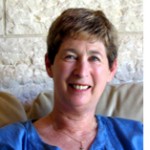By Dorothea Shefer-Vanson

MEVASSERET ZION, Israel — No end of composers have been inspired by nature, and have gone on to inspire countless audiences in turn. Vivaldi’s Four Seasons, Beethoven’s Pastoral Symphony, and the French nineteenth century composers are just a few examples of this.
But the composer whose music is above all the embodiment of nature is Gustav Mahler, and I’m writing this because my mind is still reeling from hearing the Jerusalem Symphony Orchestra’s stunning performance of his Third Symphony last week.
As is often the case with Mahler, the usual format of the orchestra has to be augmented with additional brass players (trumpets, trombones, tubas), two harps, five or six tympanists and, of course, huge string and wind sections. When they all play fortissimo together the effect can be overpowering, and I was not the only member of the audience who looked up at the roof of the auditorium at the Jerusalem Theatre at those points to see if it was about to take off and fly away. But it didn’t, thankfully.
Throughout the symphony we hear echoes of nature, and in fact of all creation, with forests and fields, harmony and dissonance, and even war and peace, evoked by the various sections of the orchestra. This is achieved by skilfull deployment of the orchestra in addition to the sound of real tubular bells at one point and a children’s choir imitating the sound of bells at another (not really nature, I know, but natural sounds all the same). The movement, in which the children’s choir is intertwined with the singing of the women’s choir provides some sublimely intricate and inspiring moments.
Putting this massive operation together is a mammoth undertaking, and the panoply of sounds, effects and surprise twists and turns was masterfully conducted – or rather managed – by maestro Frédéric Chaslin.
All Mahler’s symphonies contain one or another aspect seeking to imitate or suggest nature. I was fortunate to grow up in a household many years ago where 78 rpm. records of his First Symphony were played to me from early childhood. And so I could recognize that the symphony starts with an evocation of the forest waking up, with birdsong and hunters in the distance. I also took delight in listening to the third movement depicting what my father explained to me was a mournful funeral procession meeting a joyous wedding procession, with the encounter between the two creating an amusing mixture of sounds that is almost cacophonic.
In many of his symphonies, whether describing nature or not, Mahler treads a fine line between cacophony and harmony, but almost always resolves the dissonance by finding the path to a happy solution. Mahler’s personal life was tragic, with a troubled marriage, professional difficulties and the death of his eldest daughter at an early age, but his genius enabled him to transmute his suffering into heavenly music, and that is one of the features that marks his music as truly great.
The same is true of many other composers and artists, of course, but that is another story.
*
Shefer-Vanson is an author and freelance writer based in the Jerualem suburb of Mevasseret Zion. She may be contacted via dorothea.shefer@sdjewishworld.com